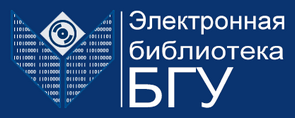Пожалуйста, используйте этот идентификатор, чтобы цитировать или ссылаться на этот документ:
https://elib.bsu.by/handle/123456789/288778| Заглавие документа: | Association between exposure to radioactive iodine after the Chernobyl accident and thyroid volume in Belarus 10-15 years later |
| Авторы: | Chirikova, E. McConnell, R.J. O'Kane, P. Yauseyenka, V. Little, M.P. Minenko, V. Drozdovitch, V. Veyalkin, I. Hatch, M. Chan, J.M. Huang, C.-Y. Mabuchi, K. |
| Тема: | ЭБ БГУ::МЕЖОТРАСЛЕВЫЕ ПРОБЛЕМЫ::Охрана окружающей среды. Экология человека ЭБ БГУ::ЕСТЕСТВЕННЫЕ И ТОЧНЫЕ НАУКИ::Физика ЭБ БГУ::ТЕХНИЧЕСКИЕ И ПРИКЛАДНЫЕ НАУКИ. ОТРАСЛИ ЭКОНОМИКИ::Ядерная техника |
| Дата публикации: | 2022 |
| Издатель: | BioMed Central Ltd |
| Библиографическое описание источника: | Environ Health Global Access Sci Sour 2022;21(1) |
| Аннотация: | Background: While there is a robust literature on environmental exposure to iodine-131 (131I) in childhood and adolescence and the risk of thyroid cancer and benign nodules, little is known about its effects on thyroid volume. Methods: To assess the effect of 131I dose to the thyroid on the volume of the thyroid gland, we examined the data from the baseline screening of the Belarusian-American Cohort Study of residents of Belarus who were exposed to the Chernobyl fallout at ages ≤18 years. Thyroid dose estimates were based on individual thyroid activity measurements made shortly after the accident and dosimetric data from questionnaires obtained 10-15 years later at baseline screening. During baseline screening, thyroid gland volume was assessed from thyroid ultrasound measurements. The association between radiation dose and thyroid volume was modeled using linear regression where radiation dose was expressed with power terms to address non-linearity. The model was adjusted for attained age, sex, and place of residence, and their modifying effects were examined. Results: The analysis was based on 10,703 subjects. We found a statistically significant positive association between radiation dose and thyroid volume (P < 0.001). Heterogeneity of association was observed by attained age (P < 0.001) with statistically significant association remaining only in the subgroup of ≥18 years at screening (P < 0.001). For this group, increase in dose from 0.0005 to 0.15 Gy was associated with a 1.27 ml (95% CI: 0.46, 2.07) increase in thyroid volume. The estimated effect did not change with increasing doses above 0.15 Gy. Conclusions: This is the first study to examine the association between 131I dose to the thyroid gland and thyroid volume in a population of individuals exposed during childhood and systematically screened 10-15 years later. It provides evidence for a moderate statistically significant increase in thyroid volume among those who were ≥ 18 years at screening. Given that this effect was observed at very low doses and was restricted to a narrow dose range, further studies are necessary to better understand the effect. |
| URI документа: | https://elib.bsu.by/handle/123456789/288778 |
| DOI документа: | 10.1186/s12940-021-00820-0 |
| Scopus идентификатор документа: | 85122501330 |
| Финансовая поддержка: | This study was supported by the National Cancer Institute (contract NO1-CP-21178 with L.B.Z., R.J.M., and P.O.) and the Intramural Research Program of the Division of Cancer Epidemiology and Genetics of the National Cancer Institute. The US Department of Energy provided funding at the earlier stages of the study, and the Nuclear Regulatory Commission provided the initial funds for equipment purchase. |
| Лицензия: | info:eu-repo/semantics/openAccess |
| Располагается в коллекциях: | Статьи НИУ «Институт ядерных проблем» |
Полный текст документа:
| Файл | Описание | Размер | Формат | |
|---|---|---|---|---|
| s12940-021-00820-0.pdf | 965,39 kB | Adobe PDF | Открыть |
Все документы в Электронной библиотеке защищены авторским правом, все права сохранены.

